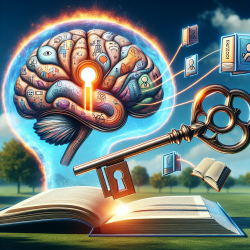Metaphors are not just poetic devices; they are essential tools that shape our thinking and communication. For bilingual children, mastering metaphors can be particularly challenging yet rewarding. Recent research titled "Metaphor production in the bilingual acquisition of English and Polish" provides valuable insights into how young bilinguals develop this skill and how educators and therapists can support them.### Key Findings from the ResearchThe study explored the ability of 62 children aged three to six, who speak both English and Polish, to produce metaphors. It revealed that:- **Chronological Age and Verbal Skills Matter:** The primary factors influencing metaphor production were the children's age and their verbal abilities in both languages.- **Type of Metaphor:** The children produced both primary metaphors (e.g., "a long day") and perceptual resemblance metaphors (e.g., "You’re my sunshine") at similar rates.- **Language Dominance:** Children tended to produce more metaphors in their stronger language, usually English, but their skills in both languages played a significant role.### Practical Applications for Practitioners#### 1. **Focus on Age-Appropriate Activities**Younger children may struggle with more complex metaphors, so tailor your activities to their developmental stage. Use simple, familiar contexts to introduce metaphors, gradually increasing complexity as they grow older.#### 2. **Enhance Verbal Skills in Both Languages**Encourage activities that boost vocabulary and verbal skills in both English and Polish. Reading stories, engaging in conversations, and playing word games can significantly enhance their ability to understand and produce metaphors.#### 3. **Use Visual and Auditory Stimuli**Incorporate visual aids and auditory prompts to make abstract concepts more concrete. For instance, use pictures and storytelling to illustrate metaphors, making it easier for children to grasp and use them.#### 4. **Cultural Sensitivity**Be aware of the cultural contexts of both languages. Some metaphors may be more common or have different meanings in English and Polish. Understanding these nuances can help you better support bilingual children in their metaphor use.### Encouraging Further ResearchWhile this study provides a solid foundation, there is always room for further exploration. Practitioners are encouraged to delve deeper into how different types of metaphors are acquired and used across various languages and cultures. Understanding these patterns can lead to more effective therapeutic strategies.### ConclusionBy integrating the findings from this research into your practice, you can better support bilingual children in developing their metaphorical thinking. This not only enhances their language skills but also enriches their overall cognitive and emotional development.To read the original research paper, please follow this link:
Metaphor production in the bilingual acquisition of English and Polish.


